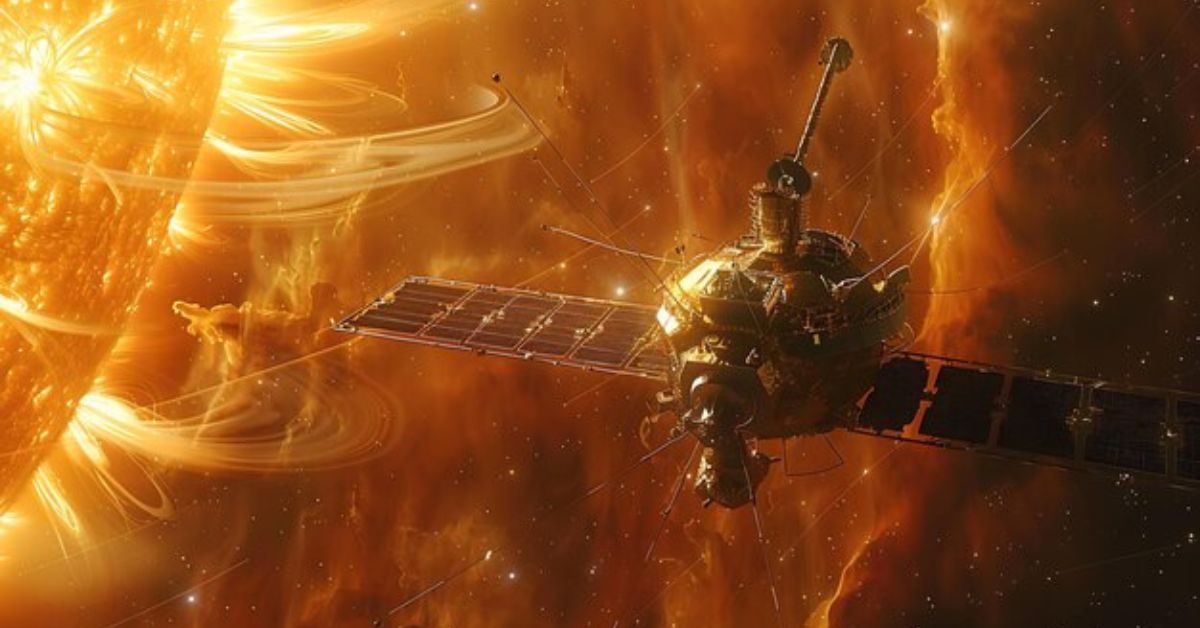Solar storms, also known as geomagnetic storms, are powerful bursts of energy originating from the sun that can have significant impacts on Earth’s technological systems and atmosphere. NASA, as the leading space agency, has dedicated vast resources to studying these phenomena to better predict and mitigate their effects. Solar storms are not only scientifically fascinating but also critical to understanding because they can disrupt power grids, communication systems, and even threaten the safety of astronauts in space. This article delves into NASA’s work on solar storms, the science behind them, and their potential impacts on Earth.
What Are Solar Storms?
Solar storms are disturbances in Earth’s magnetosphere caused by increased solar activity. These storms are triggered by eruptions on the sun, such as solar flares and coronal mass ejections (CMEs). A solar flare is an intense burst of radiation from the sun’s surface, while a CME involves massive clouds of charged particles being hurled into space. Both events can result in a solar storm if they hit Earth’s magnetic field.
Solar storms can vary in intensity, from minor disturbances that cause beautiful auroras to severe storms capable of causing widespread disruptions. The energy released during these storms interacts with Earth’s magnetic field, potentially leading to geomagnetic storms that can last for hours or even days.
NASA’s Role in Solar Storm Research
NASA plays a critical role in monitoring and researching solar storms. Through various missions and advanced technologies, NASA collects data on solar activity, analyzes the sun’s behavior, and models the potential impacts of solar storms on Earth. By studying the sun’s outer layers and the particles it emits, NASA aims to improve our ability to predict when and how solar storms will occur.
The Solar and Heliospheric Observatory (SOHO), launched in 1995, has been one of NASA’s key tools for observing solar storms. SOHO continuously monitors the sun’s atmosphere and detects solar flares and CMEs, providing early warnings of potential solar storms. Additionally, the Parker Solar Probe, launched in 2018, is currently on a mission to study the sun more closely than any previous spacecraft. It aims to gather new data on solar wind and magnetic fields to help scientists better understand the causes of solar storms.
How Do Solar Storms Affect Earth?
While the sun is millions of miles away, the energy from solar storms can still have a significant impact on our planet. When solar particles collide with Earth’s magnetic field, they can disrupt the functioning of satellites, communications networks, and power grids. These disruptions are caused by the geomagnetic storms that follow solar flares or CMEs, as the charged particles interfere with Earth’s magnetosphere.
One of the most visually striking effects of solar storms is the creation of auroras, or the Northern and Southern Lights. As the charged particles from the sun interact with Earth’s atmosphere, they create beautiful displays of light, often visible in polar regions. However, solar storms pose a real threat to modern technology, particularly because our reliance on satellite-based systems has grown significantly in recent decades.
Severe solar storms have the potential to cause widespread power outages by overloading electrical transformers and damaging power lines. For instance, the Carrington Event of 1859, one of the most powerful solar storms on record, caused telegraph systems to fail across North America and Europe. If a similar event were to occur today, it could lead to multi-billion-dollar losses due to disruptions in communication, navigation, and electricity networks.
NASA’s Prediction and Monitoring Efforts
Predicting solar storms is one of NASA’s top priorities in space weather research. Unlike weather on Earth, which is relatively easy to predict with modern meteorological technology, space weather is more challenging due to the complexity of the sun’s magnetic fields and particle emissions.
NASA uses a combination of spacecraft, ground-based observatories, and computer models to predict solar storms. Instruments like the Deep Space Climate Observatory (DSCOVR), a joint mission between NASA, NOAA, and the U.S. Air Force, monitor solar wind and provide real-time data on the strength and direction of charged particles heading toward Earth. This allows scientists to issue warnings when a CME or solar flare is likely to impact our planet.
By continuously improving its predictive models, NASA aims to give advance notice of solar storms, allowing for preventive measures to protect sensitive infrastructure, including satellite communications and power grids.
Protecting Technology and Infrastructure
The potential for solar storms to cause widespread technological disruptions makes it crucial to have effective protective measures in place. NASA collaborates with other space agencies, governments, and private companies to develop strategies for safeguarding technology against solar storms. Satellite operators, for example, can shut down non-essential systems during a solar storm to prevent damage, and power grid operators can take steps to mitigate the risk of transformer overloads.
Additionally, NASA is working on developing space weather forecasting tools that could be integrated into global systems, much like Earth weather forecasts. This would allow companies and governments to prepare for it in advance and minimize the risks they pose to critical infrastructure.
One area of particular concern is the growing presence of human activity in space. With the rise of space tourism and plans for manned missions to Mars, understanding the effects of it on astronauts is more important than ever. Solar radiation can pose serious health risks to astronauts, as high-energy particles from solar storms can penetrate spacecraft shielding and increase the risk of cancer and other illnesses.
The Parker Solar Probe: Unlocking Solar Mysteries
NASA’s Parker Solar Probe, launched in 2018, represents a major step forward in understanding it. As the first spacecraft to fly directly into the sun’s outer atmosphere, or corona, the Parker Solar Probe is gathering unprecedented data on solar wind and the sun’s magnetic fields.
The primary goal of the Parker Solar Probe is to uncover the mechanisms that drive the sun’s explosive activity. By getting closer to the sun than any other spacecraft in history, it is helping scientists to understand how solar wind originates and how energy moves through the sun’s atmosphere. This information will be critical in improving space weather forecasting models and predicting when solar storms will occur.
The Parker Solar Probe’s findings have already challenged previous theories about the sun, and as the mission continues, it is expected to provide more insights into the complex processes that drive solar storms.
Solar Storm Preparedness: Public Awareness and Safety
Given the potential impact of solar storms on modern society, public awareness and preparedness are key components of NASA’s outreach efforts. NASA regularly provides updates on space weather conditions, and its findings are shared with government agencies and the public to ensure that people understand the risks posed by it.
In the event of a severe solar storm, authorities may need to take emergency measures, such as temporarily shutting down parts of the power grid or issuing warnings to aircraft operators and satellite services. Public awareness campaigns help ensure that people know what steps to take if a solar storm disrupts essential services.
NASA’s collaboration with the National Oceanic and Atmospheric Administration (NOAA) and the U.S. Department of Homeland Security ensures that solar storm risks are included in national disaster preparedness plans. This collaboration is essential for protecting infrastructure and ensuring that emergency responders are ready to handle the aftermath of a severe storm.
The Future of Solar Storm Research
NASA’s work in studying and predicting it continues to evolve. With advancements in satellite technology, better predictive models, and ongoing missions like the Parker Solar Probe, NASA is improving our understanding of it and how to mitigate their effects.
As solar activity follows an 11-year cycle of rising and falling intensity, the next solar maximum is expected to occur around 2025. During this period, solar storms are likely to become more frequent and potentially more severe. NASA’s research will be critical in helping to prepare for these events and in safeguarding Earth’s technological systems from future disruptions.
Conclusion
Solar storms are a natural phenomenon with the potential to cause widespread disruptions to our technological systems. NASA’s work in monitoring, predicting, and mitigating the effects of it is essential for protecting critical infrastructure, public safety, and space exploration efforts. As NASA continues to gather data and improve its forecasting capabilities, society will be better equipped to face the challenges posed by the sun’s powerful outbursts. Through missions like the Parker Solar Probe and SOHO, NASA is unlocking the mysteries of the sun, ensuring that we can better understand and adapt to its unpredictable nature.










